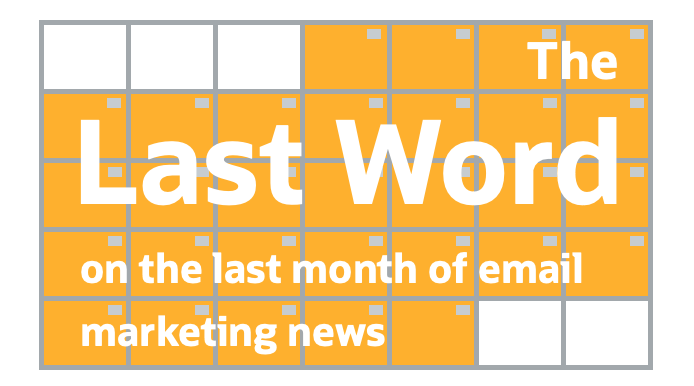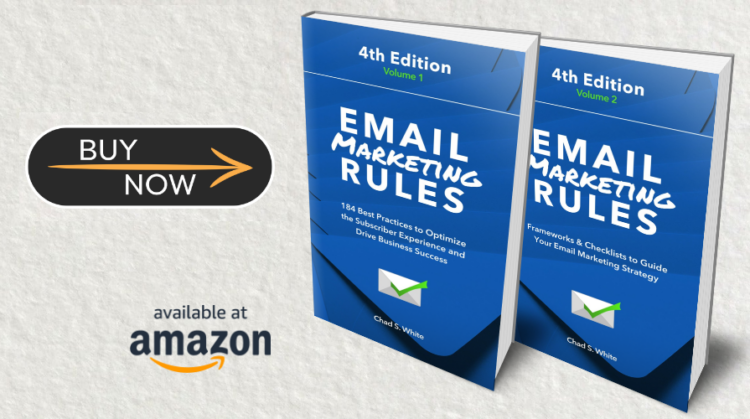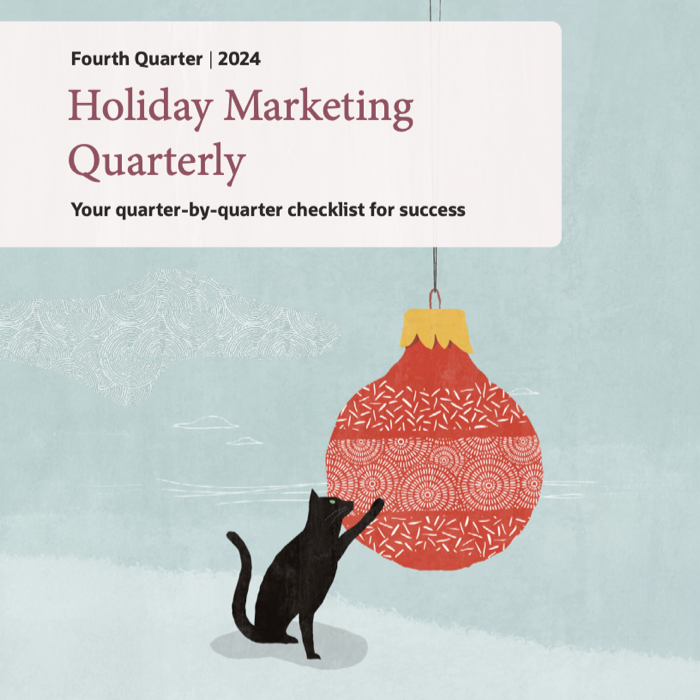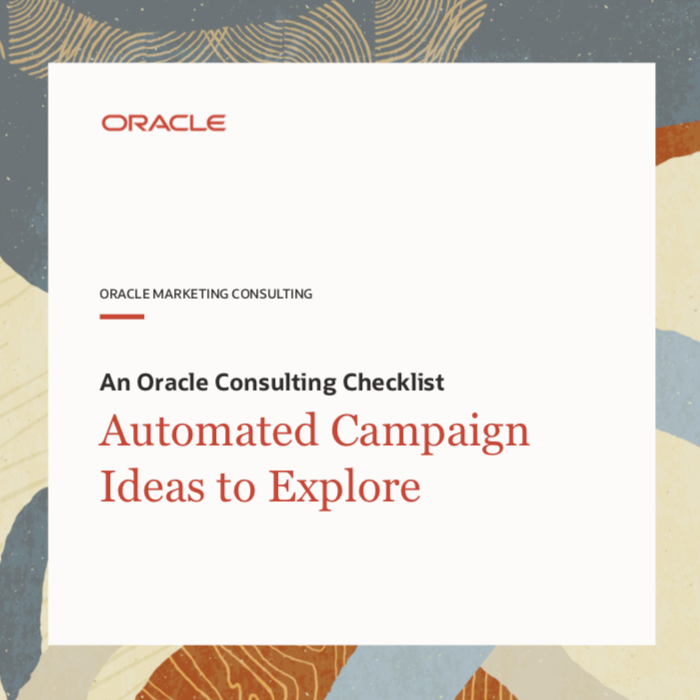Webbula: What Are the Top 3 Skills for a Successful Email Marketer in 2023?
Posted on September 27, 2022

Along with 9 other email experts, I share what I think are the top 3 skills that an email marketers need to have to be successful. For me, they need to have:
- Curiosity…about consumer behavior, new platform developments, and more
- A comfort with numbers, as the art and science of email marketing increasingly skews toward the science
- Solid communication skills, as email marketing desilos and becomes an integral part of an omnichannel marketing strategy
To see my full answers, and to see everyone else’s too…
Digital Marketers Are Afraid to Make Mistakes: 4 Negative Repercussions
Posted on September 26, 2022

Basketball hall of famer and greatest of all time Michael Jordan once said, “I’ve missed more than 9,000 shots in my career. I’ve lost almost 300 games. Twenty-six times I’ve been trusted to take the game-winning shot and missed. I’ve failed over and over and over again in my life. And that is why I succeed.”
While athletes, entrepreneurs, and many other professionals have a healthy perspective on failure as a route to success, that’s not always the case with digital marketing professionals. For instance, Oracle Marketing Consulting ran a poll last year asking if digital marketers were hesitant to admit to mistakes for fear of being fired or suffering other repercussions and a shockingly high 78% said yes.
That’s roughly in line with a 2017 poll by Litmus where only 32% of respondents said that email marketing was a failure-friendly channel. In a separate 2016 poll by Litmus, more than 11% of respondents said that they personally knew someone who’d been fired for making an email marketing mistake.
Having a zero tolerance for mistakes in digital marketing is an unrealistic standard that no team can live up to for very long. Such a policy shows an unfamiliarity with the reality of how these channels operate and how digital campaigns are crafted and launched. But more than that, it creates anxiety, secrecy, and risk-aversion that hold digital marketing programs back long-term in four ways…
Good Taxonomy Leads to Great Digital Marketing Optimization Opportunities
Posted on September 22, 2022

Digital marketing is flush with optimization opportunities, but only if you have a highly organized program. A central key to that is having a solid taxonomy, where you use tagging to keep track of various program elements. This kind of tagging system is key to easily and regularly optimizing your:
- Audience acquisition sources
- Calls-to-actions
- Content types
- Campaign performance
Let’s talk about how tagging helps with each of those…
Email Marketing in Flux: The Biggest Changes Impacting the Channel
Posted on September 14, 2022

Email marketing is more powerful than ever, but the strategies and tactics needed to succeed are changing because of 3 mega-trends:
- The sunsetting of third-party cookies driving an increased focus on customer identification and the collection of zero- and first-party data
- Apple’s Mail Privacy Protection forcing marketers to take a holistic, cross-channel approach to measuring performance and selecting safe mailable audiences
- The pandemic-driven consumers behavior changes that reinforce the need for personalization, nimble build systems, and smooth, well-orchestrated omnichannel experiences
For a look at each of those mega-trends…
Dyspatch: Interview with Chad S. White
Posted on September 12, 2022

- What will email marketing look like in 2023, 2024, and beyond?
- Do you think other inbox providers will adopt Mail Privacy Protection?
- Should marketers pay attention to what subscribers say or do?
- Will AMP for Email be a centerpiece of email marketing in 10 years?
Sepy Bazzazi, Growth Marketing Manager at Dyspatch, asked me those questions and more in an interview for the Dyspatch Blog. To see all of my answers…
Email Deliverability Warning Signs Heading into Holiday Season
Posted on September 8, 2022

The last thing email marketers want during the critical holiday season is deliverability problems, which is why many dedicate considerable time during the third quarter to getting their sender reputations and inbox placement rates as healthy as they can get them. However, marketers are facing two unique challenges this year that may foreshadow greater than usual deliverability risks during the all-important fourth quarter.
- The 1-year anniversary of Apple’s Mail Privacy Protection
- A ‘tidal wave’ of listings from the world’s largest blocklist operator, Spamhaus
For a full breakdown of both of those issues by Oracle Marketing Consulting’s Heather Goff…
10 Common Email Marketing Mistakes that Are *Fairly* Easy to Fix
Posted on September 7, 2022

Email marketing is a complicated interplay of tactics and strategies, and it’s easy to make mistakes. I recently wrote about 10 common email marketing mistakes that are easy to fix, and now I’d like to share another 10 common mistakes with fixes that are slightly more involved, but still very much worth your attention.
- Allowing errors to slip through
- Not setting default values for personalization
- Using a no-reply email address
- Not using responsive email design
- Using a one-size-fits-all send time
- Only A/B testing your broadcast campaigns
- Ignoring the natural rate of return
- Not sending your welcome email immediately
- Sending your email in the wrong language
- Not optimizing for dark mode
For a discussion of each of those mistakes and how to fix them…
The Last Word on August 2022
Posted on September 6, 2022

A roundup of email marketing articles, posts, and tweets you might have missed last month…
Must-read articles, posts & reports
Did Email Just Defeat Social Media for Good? (Unemployable)
B2B Digital Marketing Trends: Top Channels and Tactics for 2022 (MarketingProfs)
Five Things Your Email Marketer Wants You to Know (Email Snarketing)
Are Surveys Transactional Emails? (Kickbox)
Gmail Is Now Officially Allowed to Spam-Proof Politicians’ Emails (The Verge)
Insightful & entertaining tweets
If you see a great post, save it.
If you get a great sales email, save it.
If you read a great sales page, save it.
Swipe files are extremely valuable.
Build yours up one swipe at a time.
— copyblogger (@copyblogger) August 1, 2022
The more I learn, the more I see great marketing is about listening.
Listening to your audience is the ♥️ of marketing.
— Heike Young (@YoungHeike) August 1, 2022
The hardest part about copywriting is trying to write marketing copy that doesn’t sound like “marketing copy”
The secret?
Steal your copy straight from the mouths of your best customers
— Katelyn Bourgoin ⚡️ (@KateBour) August 1, 2022
We’ve totally been there, @BurgerKing!
You haven’t earned your stripes as an email marketer until you’ve had a Whopper of a campaign blunder! Now you’re one of us! Welcome to the club. #emailgeeks #EmailMarketing #riteofpassage pic.twitter.com/PYtB820Ywi
— Humans of Email (@Humans_of_Email) August 9, 2022
In case you didn’t know, Pokémon emails have been Dark Mode enhanced since January 2022#arizCodesEmail #emailgeekshttps://t.co/kR6hccHMcp pic.twitter.com/gvOCnafELX
— Emmanuel Arizmendi (@arizdesign) August 22, 2022
Noteworthy subject lines
Nordstrom, 8/3 – 5 summer must-haves for casual days
Wegmans Catering on Meals 2GO, 8/13 – 3 Must-Haves for Your Summer Party
Eddie Bauer, 8/13 – ☀️ Summer Fun In Lightweight Basics 🏖️
The Nuts.com Family, 8/18 – Today’s Spotlight: Single Serve Snacks For School✨
Dick’s Sporting Goods, 8/3 – 💰 SAVE on school style! Up to 50% off won’t last long…
Express, 8/5 – We brought in celeb stylists to spill the scoop on fall’s top trends 😍
Big Lots, 8/28 – Up to 25% OFF Halloween Décor? That’s a Hallo-WIN 🎃
West Elm, 8/3 – JUST in! Subtly spooky fall decor
Williams Sonoma, 8/4 – Pumpkin favorites are BACK!
Wegmans, 8/25 – The Season’s Best Tomatoes are Here!
Lane Bryant, 8/5 – The bra that launched 1000s of blissed-out sighs.
Lane Bryant, 8/13 – These jeans? The most iconic yet.
Express, 8/20 – The pant that broke the internet.
Saks Fifth Avenue, 8/27 – These took over everyone’s Wishlist this week
GapCash, 8/21 – Y2K SAYS HEY
Panera Bread, 8/25 – “Yeah, I cook”. Pulls out a Panera® Flatbread Pizza
Zales, 8/18 – 👰 Here Comes The Bridal Sale!
IKEA, 8/17 – Chad, our new collection is all about pausing and reflecting
IKEA, 8/31 – Better days start with smart routines
Gap, 8/4 – 2 ways to shop = 40% OFF on our app -OR- 30% OFF online
Petco, 8/13 – Save 10% on in-store pickup orders today!
New posts on EmailMarketingRules.com
12 Trends a-Trending: What to Plan for This Holiday Season
Best Days to Send Email Marketing Campaigns This Holiday Season
How to Launch a Successful Holiday Campaign
Optimizing Email Marketing Calls-to-Action: A 4-Point Plan
Email Newsletters: The New Best Practices
Posted on September 1, 2022

Nothing in email marketing is static, because ESP technology, inbox providers, and—most importantly—consumers are constantly changing. That change extends to the email newsletter, a mainstay of B2B marketing.
To get a read on the latest newsletter trends, I spoke with our Creative Services and B2B teams here at Oracle Marketing Consulting about what they were doing when they overhauled our clients’ newsletters. Consider this your guide to the new best practices for email newsletters. Here are their top recommendations:
- Use single-column layouts
- Adopt modular email architecture
- Personalize content
- Tease content
- Create read magnets
- Make your designs inclusive and accessible
- Differentiate your sender names
- Write descriptive subject lines
- Borrow from B2C email designs
For a discussion of each of these new best practices…
12 Trends a-Trending: What to Plan for This Holiday Season
Posted on August 31, 2022

This year’s holiday season is shaping up to be as dynamic and turbulent as the past few have been. But knowing what to expect and proper planning can help make the best of another tough holiday season.
Here are our predictions for 12 trends to account for in your holiday campaign planning process:
- Plan for high inflation to persist
- Recession fears will heighten shoppers’ concerns
- Buy Now, Pay Later (BNPL) growing in usage
- Supply chains will remain troublesome
- Continued pressure to reduce online returns
- In-store sales to continue rebounding
- Full impact of Apple’s MPP will be felt
- Early start to holiday season reinforced further
- Veterans Day likely to be affected by elections
- Marquee shopping days flattening out
- BOPIS & curbside key to final week of season
- Adopt more holistic performance measurement
For a full discussion of each of those trends…
 Email Marketing Rules
Email Marketing Rules







































